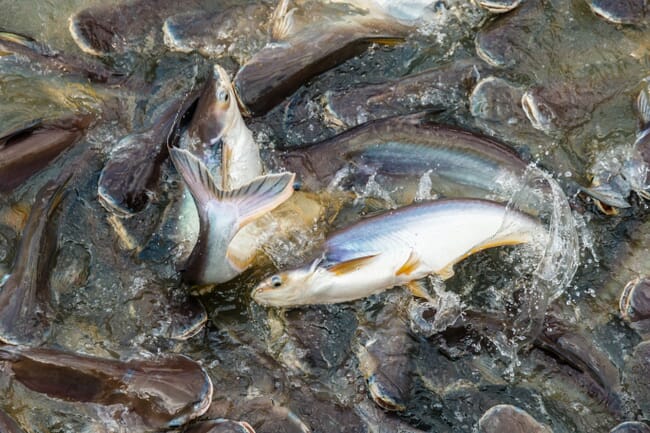
“The scale of modern aquaculture is immense and still growing. Yet we know so little about the animals that we are putting into mass production, and the negative consequences of aquaculture’s expansion on individual animals will just continue to accumulate,” said Becca Franks, a research scientist at New York University’s Department of Environmental Studies, in a press release.
The study, which was recently published in Science Advances, claims to be “the first to systematically examine the scientific knowledge about animal welfare for the 408 aquatic animal species being farmed around the world—animals that include salmon, carp, and shrimp”.
The researchers found that specialised scientific studies about animal welfare—generally defined as an animal’s ability to cope with its environment—were available for just 84 species. The remaining 324 species, which represent the majority of aquaculture production, had no information available.
Animal welfare legislation is not new, but in recent years, governments have adopted laws aimed at enhancing enforcement and extending animal protection.
With traditional fishing on the decline, aquaculture has been touted as both a solution to food insecurity and as a means to reduce pressure on species in seas and oceans. However, the growth of aquaculture, or aquafarming, hasn’t diminished stress on wild populations, according to the researchers. Meanwhile, as recently as 2018, 250 to 408 billion individual animals from more than 400 species were farmed in aquaculture – about 20 times the number of species farmed in animal agriculture on land – according to the FAO.
The expansion of aquaculture raises concerns among the researchers that the industry is moving ahead without sufficient knowledge of the animal life it is growing. The absence of this information signals risk because its operations and decisions are not scientifically based, the researchers note, and can lead to poor living conditions and suffering for the individual animals involved.
To explore this matter, the team sought to determine what research literature existed on the more than 400 species being farmed in 2018.
Their results showed that only 25 species, or about 7 percent of animals being farmed in aquaculture, had five or more publications on these animals’ welfare. By contrast, 231 species had no welfare publications, while 59 had only one to four such publications. The remaining 93 did not have species-level taxonomic information, meaning it lacked sufficiently detailed findings on these species.
“While the presence of animal welfare knowledge does not ensure well-being, the absence of such information is troubling,” said Franks. “In sum, our research reveals that modern aquaculture poses unparalleled animal welfare threats in terms of the global scope and the number of individual animal lives affected.”
The authors emphasise that some aquatic animal species, such as bivalves, may present fewer welfare concerns to begin with and may be a more promising avenue for production.
“Although aquaculture has been around for thousands of years, its current expansion is unprecedented and is posing great risks, but, because it is so new, we can choose a different path forward,” Franks argues.


